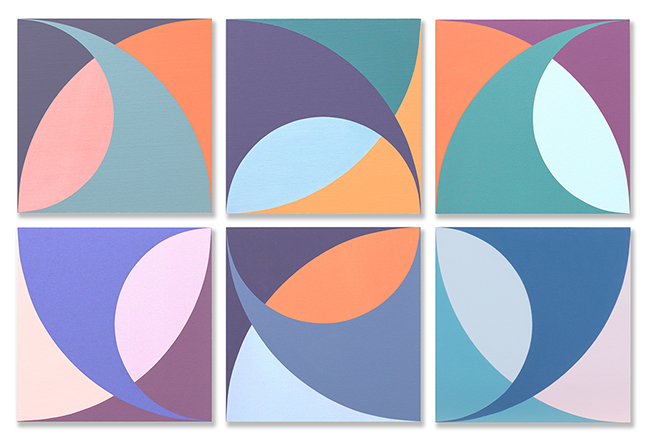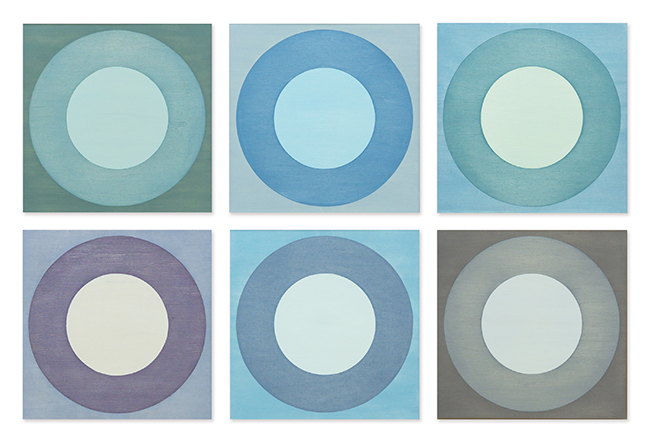Haeley Kyong, an artist whose creations move beyond traditional limits, connecting deeply with the human spirit. Her work is built on the idea that art can transform and stir the core of human emotions, often prompting reflection through her minimalist yet expressive pieces.

Growing up in South Korea, Kyong’s path in the arts was shaped by a unique blend of cultural experiences and disciplined study. She honed her skills at Mason Gross School of the Arts at Rutgers University and Columbia University in New York City. This mix of Eastern and Western influences in her education is evident in her ability to merge classic techniques with modern themes, offering an enduring yet forward-thinking approach to artistic expression.
In One World, Many Visions, Kyong examines the variety of ways people perceive the world around them. The artwork conveys the richness of human perspectives, highlighting the diversity in thought and experience that shapes our reality. At the same time, she binds these unique views together, emphasizing a shared existence that connects everyone.

The color palette in this work is both bold and varied, allowing the different perspectives to stand out while remaining part of a cohesive whole. Kyong uses a minimalist style to remove distractions, creating space for viewers to connect with the piece on a personal level. By using color as a means of communication, she encourages emotional engagement, fostering a sense of introspection and belonging.
At its heart, this piece is about recognizing the vast range of thoughts and perceptions in the world. Through abstraction, Kyong challenges viewers to look beyond their own assumptions and biases, pushing for a deeper understanding of the complexity within our collective reality. This work serves as both a reflection on society and an exploration of the human mind.

In Around the World to the Six Continents, Kyong turns her focus to the idea of global connectivity, while also celebrating individuality. This artwork speaks to a fundamental truth: every individual is unique, yet we are all part of a larger whole. The piece is centered around a circle, a symbol of the world itself.
Kyong uses geometric shapes like half-circles and quarter-circles, which are linked together to form a visual representation of the six continents. The simplicity of the design reflects order and interconnection, while the interaction of the shapes adds depth, symbolizing how individuals—despite their differences—form communities and relationships.
This piece’s strength lies in its balance between the collective and the individual. Kyong adeptly handles the dynamic of unity versus distinct identity, using circular forms as a metaphor for human interaction. Her work conveys a message of harmony and collaboration, showing that while we may come from different parts of the world, we all share a common experience.
With A Circular Story Teller, Kyong dives into themes of identity, heredity, and the invisible forces that bind us together as humans. Inspired by the structure of DNA, Kyong interprets this biological foundation visually, using a single large sheet of paper, folded using traditional methods, to mirror the complex patterns found in our genetic code.
The folds in the paper serve as the “storyteller,” uncovering the layers of connections that define our existence. Once again, Kyong employs circular motifs, reflecting the cyclical nature of life and the transmission of genetic information across generations. The recurring circular form in her work echoes the concept of inheritance—not just in a biological sense but also in cultural and familial traditions.
What makes A Circular Story Teller compelling is its ability to distill a scientific idea into a simple, visual form that is easy to grasp. The minimalist design invites contemplation, and the repetition of shapes conveys the notion of receiving and passing on traits, both literal and metaphorical. Kyong’s fascination with the unseen aspects of human identity—whether it be physical traits or the intangible forces that shape who we are—takes center stage in this piece.
Through her thoughtful exploration of DNA and inheritance, Kyong raises profound questions about the nature of identity, choice, and continuity. The work encourages viewers to reflect on their own roles in the ongoing cycle of life, and the balance between what we inherit and what we choose to create anew.
Across these three works, Haeley Kyong demonstrates her ability to blend simplicity with meaning, inviting viewers to engage with her art on a deeply personal level. Her minimalist style provides room for introspection, while her focus on human connection, diversity, and identity speaks to themes that resonate universally.

